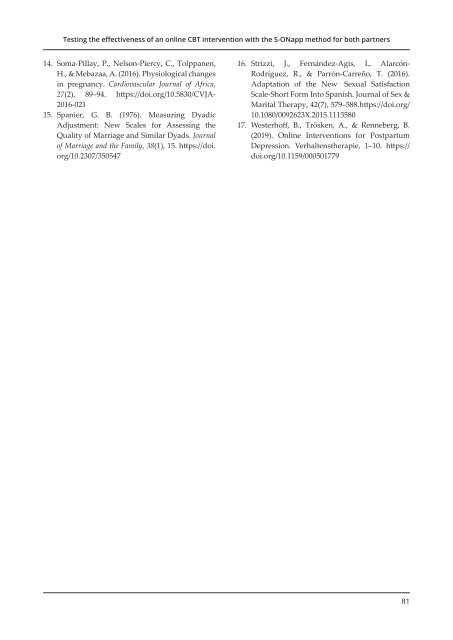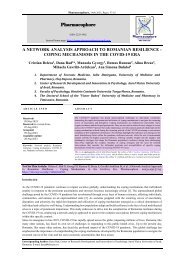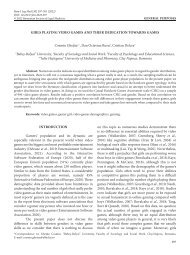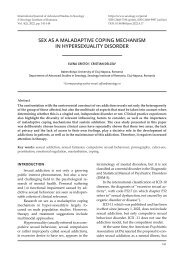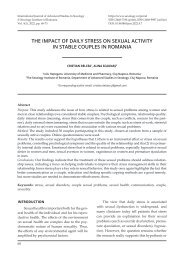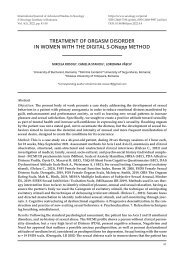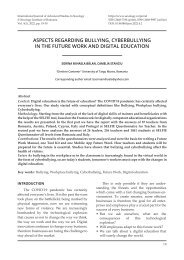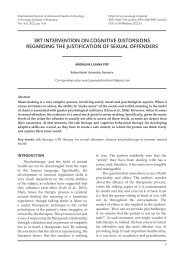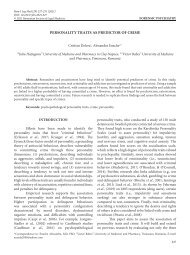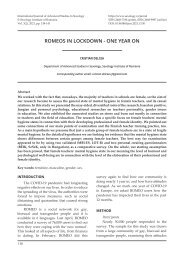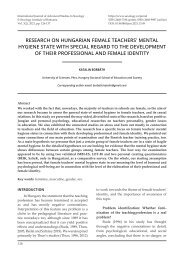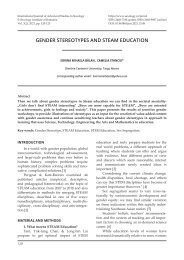Testing the effectiveness of an online CBT intervention with the S-ONapp method for both partners to reduce postpartum female sexual disorders
Objective: The research evaluates the effectiveness of an online CBT program through the S-ONapp method addressed to both partners in order to decrease female sexual problems and increase the sexual satisfaction of both partners in the postpartum period. Method: In a randomized clinical trial, participants - women in the first 3 months postpartum with sexual problems revealed by FSFI scale scores - were randomly assigned to two groups: experimental group (CBT online intervention for both partners) and control group (intervention CBT online standard for women). For both groups, scores on the FSFI (female sexual disorder), NSSS-S (sexual satisfaction) scales for both partners, and DAS (couple satisfaction) scales for both partners are measured on pretest, posttest, and 6-month follow-up. Expected results: Regarding the control group, we expect that in the experimental group there will be: 1) a lower level of postpartum sexual problems reported by women in the posttest; 2) a higher level of sexual satisfaction reported by women in the posttest; 3) a higher level of sexual satisfaction reported by partners in the posttest; 4) a higher level of couple satisfaction reported by women in the posttest; 5) a higher level of couple satisfaction reported by partners in the posttest. The results are maintained 6 months after the intervention. Conclusions: An online CBT intervention program for both partners, based on a multidimensional approach to postpartum female sexual problems, is effective in improving the sexual life of both partners by increasing sexual satisfaction and couple satisfaction, with direct implications for the clinical field.
Objective: The research evaluates the effectiveness of an online CBT program through the S-ONapp
method addressed to both partners in order to decrease female sexual problems and increase the sexual satisfaction of both partners in the postpartum period. Method: In a randomized clinical trial, participants - women in the first 3 months postpartum with sexual problems revealed by FSFI scale scores - were randomly assigned to two groups: experimental group (CBT online intervention for both partners) and control group (intervention CBT online standard for women). For both groups, scores on the FSFI (female sexual disorder), NSSS-S (sexual satisfaction) scales for both partners, and DAS (couple satisfaction) scales for both partners are measured on pretest, posttest, and 6-month follow-up.
Expected results: Regarding the control group, we expect that in the experimental group there will be:
1) a lower level of postpartum sexual problems reported by women in the posttest; 2) a higher level of
sexual satisfaction reported by women in the posttest; 3) a higher level of sexual satisfaction reported
by partners in the posttest; 4) a higher level of couple satisfaction reported by women in the posttest;
5) a higher level of couple satisfaction reported by partners in the posttest. The results are maintained
6 months after the intervention.
Conclusions: An online CBT intervention program for both partners, based on a multidimensional
approach to postpartum female sexual problems, is effective in improving the sexual life of both partners by increasing sexual satisfaction and couple satisfaction, with direct implications for the clinical field.
Create successful ePaper yourself
Turn your PDF publications into a flip-book with our unique Google optimized e-Paper software.
<strong>Testing</strong> <strong>the</strong> <strong>effectiveness</strong> <strong>of</strong> <strong>an</strong> <strong>online</strong> <strong>CBT</strong> <strong>intervention</strong> <strong>with</strong> <strong>the</strong> S-<strong>ONapp</strong> <strong>method</strong> <strong>for</strong> <strong>both</strong> <strong>partners</strong><br />
14. Soma-Pillay, P., Nelson-Piercy, C., Tolpp<strong>an</strong>en,<br />
H., & Mebazaa, A. (2016). Physiological ch<strong>an</strong>ges<br />
in pregn<strong>an</strong>cy. Cardiovascular Journal <strong>of</strong> Africa,<br />
27(2), 89–94. https://doi.org/10.5830/CVJA-<br />
2016-021<br />
15. Sp<strong>an</strong>ier, G. B. (1976). Measuring Dyadic<br />
Adjustment: New Scales <strong>for</strong> Assessing <strong>the</strong><br />
Quality <strong>of</strong> Marriage <strong>an</strong>d Similar Dyads. Journal<br />
<strong>of</strong> Marriage <strong>an</strong>d <strong>the</strong> Family, 38(1), 15. https://doi.<br />
org/10.2307/350547<br />
16. Strizzi, J., Fernández-Agis, I., Alarcón-<br />
Rodríguez, R., & Parrón-Carreño, T. (2016).<br />
Adaptation <strong>of</strong> <strong>the</strong> New Sexual Satisfaction<br />
Scale-Short Form In<strong>to</strong> Sp<strong>an</strong>ish. Journal <strong>of</strong> Sex &<br />
Marital Therapy, 42(7), 579–588. https://doi.org/<br />
10.1080/0092623X.2015.1113580<br />
17. Westerh<strong>of</strong>f, B., Trösken, A., & Renneberg, B.<br />
(2019). Online Interventions <strong>for</strong> Postpartum<br />
Depression. Verhaltens<strong>the</strong>rapie, 1–10. https://<br />
doi.org/10.1159/000501779<br />
81


